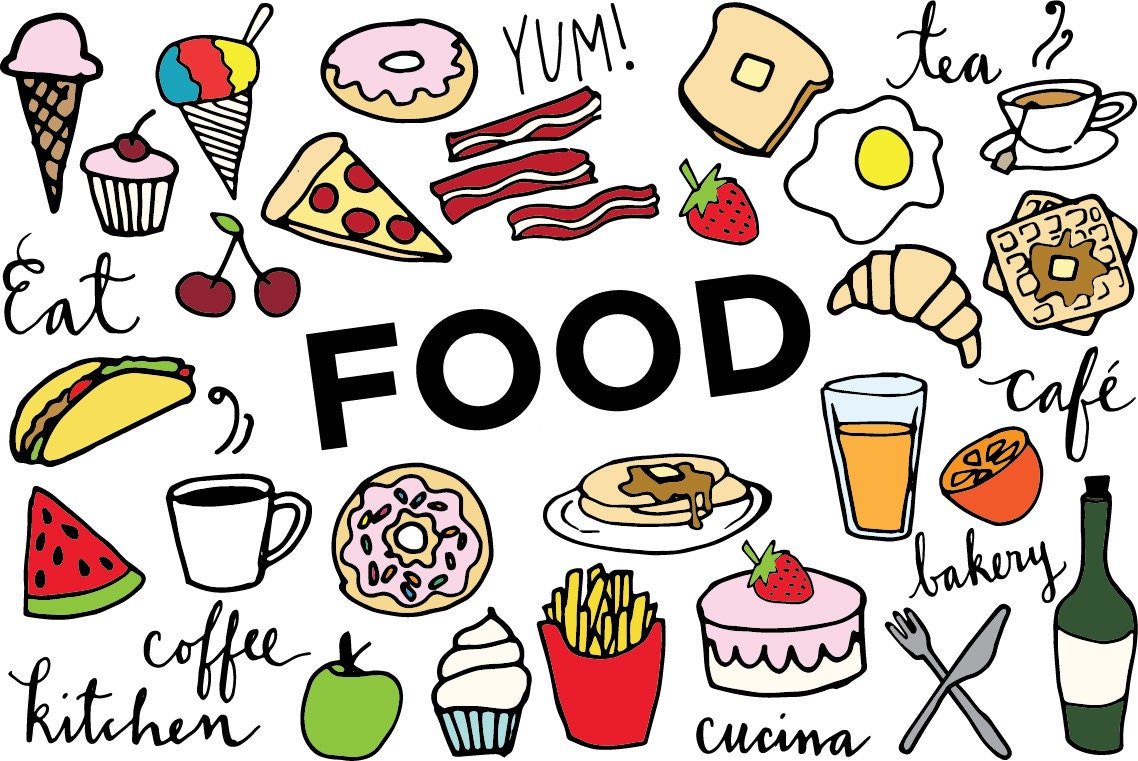 illustration from Etsy · In stock
illustration from Etsy · In stock
The Ultimate Guide to Food: Exploring Culinary Delights, Nutrition, and Healthy Eating Habits
Food is more than just sustenance; it's culture, tradition, celebration, and comfort. This guide explores culinary arts, nutritional science, healthy eating, and sustainable practices.
The Multifaceted World of Food
Food encompasses a vast range of topics:
- Culinary Arts: Preparing and presenting food with artistry and science.
- Nutrition: How food affects our bodies and the nutrients we need.
- Healthy Eating: Making informed food choices for well-being.
- Food Safety: Preventing contamination and spoilage.
- Food Culture: The cultural significance of food and related traditions.
- Sustainable Food Systems: Environmentally friendly and ethical food production.
Culinary Delights: A Journey Through Flavors
Culinary arts are about creating delicious and visually appealing dishes.
Basic Cooking Techniques
Mastering these techniques is essential:
- Sautéing: Cooking food quickly in a small amount of fat.
- Braising: Slow-cooking food in liquid in a covered pot.
- Roasting: Cooking food in an oven, uncovered.
- Grilling: Cooking food over an open flame.
- Baking: Cooking food in an oven using dry heat.
- Steaming: Cooking food using steam to preserve nutrients.
Exploring Global Cuisines
Explore the diverse flavors of different cultures:
- Italian: Pasta, pizza, and fresh ingredients.
- French: Classic sauces, pastries, and elegant presentation.
- Mexican: Bold flavors, spices, corn, and beans.
- Indian: Aromatic spices, curries, and vegetarian dishes.
- Japanese: Fresh seafood, sushi, and minimalist presentation.
- Thai: Balance of sweet, sour, spicy, and savory flavors.
The Art of Flavor Pairing
Creating harmonious flavor combinations:
- Sweet and Salty: Caramel and sea salt.
- Sweet and Spicy: Mango salsa with chili peppers.
- Savory and Umami: Mushrooms and Parmesan cheese.
- Acidic and Rich: Lemon juice and olive oil.
Nutrition: Fueling Your Body with the Right Foods
Understanding essential nutrients is crucial for maintaining good health.
Macronutrients: The Building Blocks of Energy
Essential nutrients that provide energy:
- Carbohydrates: Primary energy source. Choose complex carbs.
- Proteins: Essential for building and repairing tissues.
- Fats: Hormone production, cell function, and energy storage. Choose healthy fats.
Micronutrients: Vitamins and Minerals
Essential for various bodily functions:
- Vitamins: Regulate processes in the body.
- Minerals: Essential for bone health and nerve function.
The Importance of Hydration
Essential for life:
- Regulating body temperature
- Transporting nutrients
- Lubricating joints
- Eliminating waste products
Aim for at least 8 glasses of water per day.
Healthy Eating Habits: Nourishing Your Body for Life
Tips for a healthy eating plan:
- Focus on Whole Foods: Fruits, vegetables, whole grains, lean proteins, and healthy fats.
- Limit Processed Foods, Sugary Drinks, and Unhealthy Fats: These are often high in sugar, salt, and unhealthy fats.
- Practice Portion Control: Be mindful of portion sizes.
- Eat Regularly: Aim to eat every 3-4 hours.
- Plan Your Meals: Plan ahead to make healthier choices.
Food Safety: Protecting Yourself from Foodborne Illnesses
Tips for ensuring food safety:
- Wash Your Hands Thoroughly: Before and after handling food.
- Keep Surfaces Clean: Clean and sanitize countertops and cutting boards.
- Cook Food to the Proper Temperature: Use a food thermometer.
- Store Food Properly: Refrigerate perishable foods promptly.
- Avoid Cross-Contamination: Keep raw meat separate from other foods.
Food Culture: Celebrating Traditions and Connecting with Others
Food shapes traditions and social interactions.
Food and Celebrations
Special foods associated with holidays:
- Thanksgiving: Turkey, stuffing, and pumpkin pie.
- Christmas: Roast goose, gingerbread cookies, and eggnog.
- Lunar New Year: Dumplings, spring rolls, and noodles.
Food and Social Gatherings
Food brings people together to share meals.
Food and Identity
Food reflects cultural heritage and personal values.
Sustainable Food Systems: Protecting Our Planet and Our Food Supply
Key aspects of sustainable food systems:
- Reducing Food Waste: Save resources and reduce emissions.
- Supporting Local and Organic Agriculture: Reduce emissions and support local economies.
- Eating Less Meat: Reduce your environmental footprint.
- Conserving Water: Protect water resources.
Conclusion: Embracing the World of Food
Enhance your relationship with food by making informed choices for your health, community, and planet.
Ready to take your food journey to the next level? Explore new recipes and connect with others!
Call to Action: Share your favorite food-related tip or recipe in the comments below!
Published on March 21, 2025
reference: Various Article on internet
Gema
Wordsmith and content writer passionate about creating high-quality content that informs, entertains, and inspires. Let me bring your brand's story to life.
All stories by : Gema

0 Comments